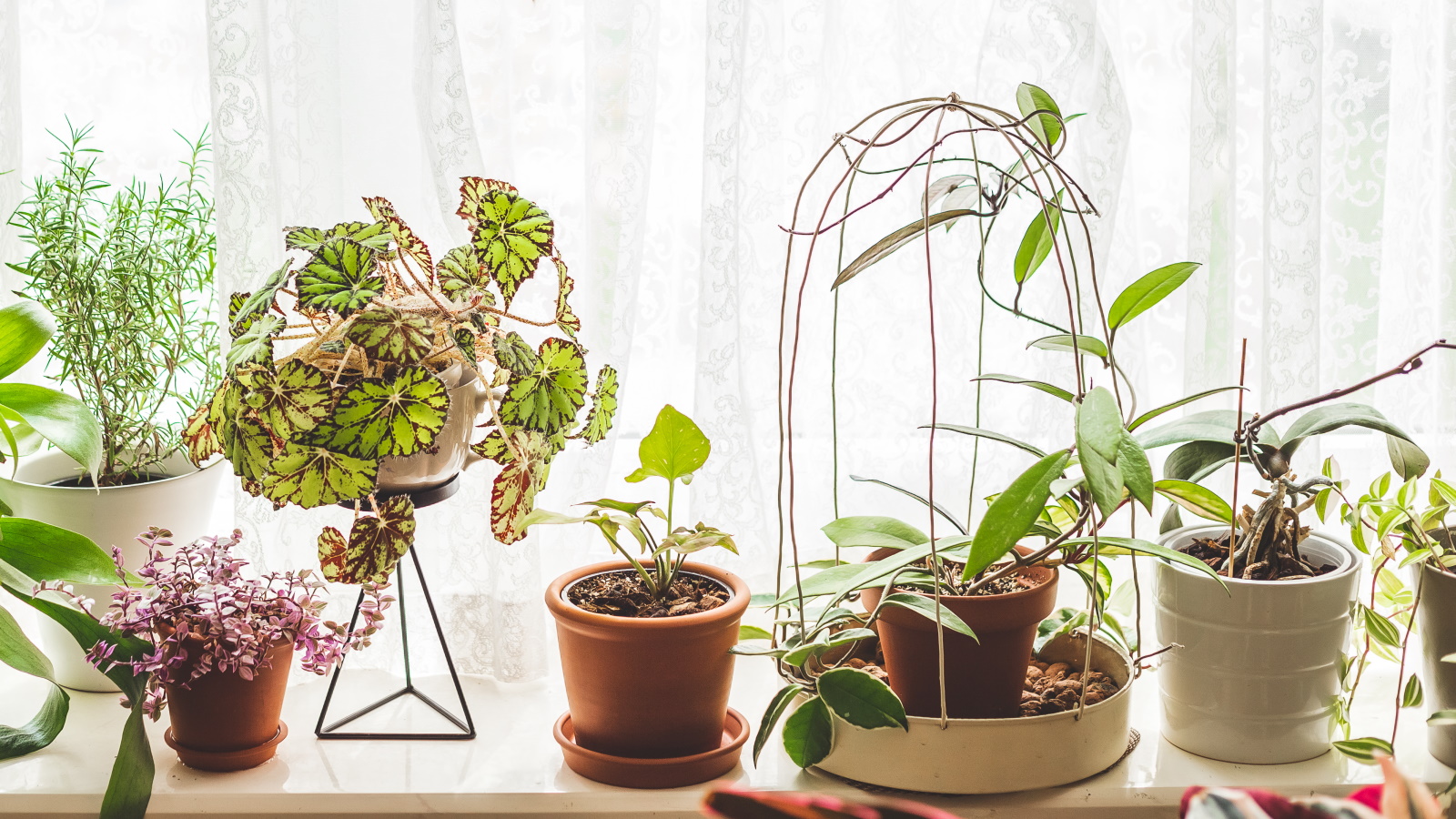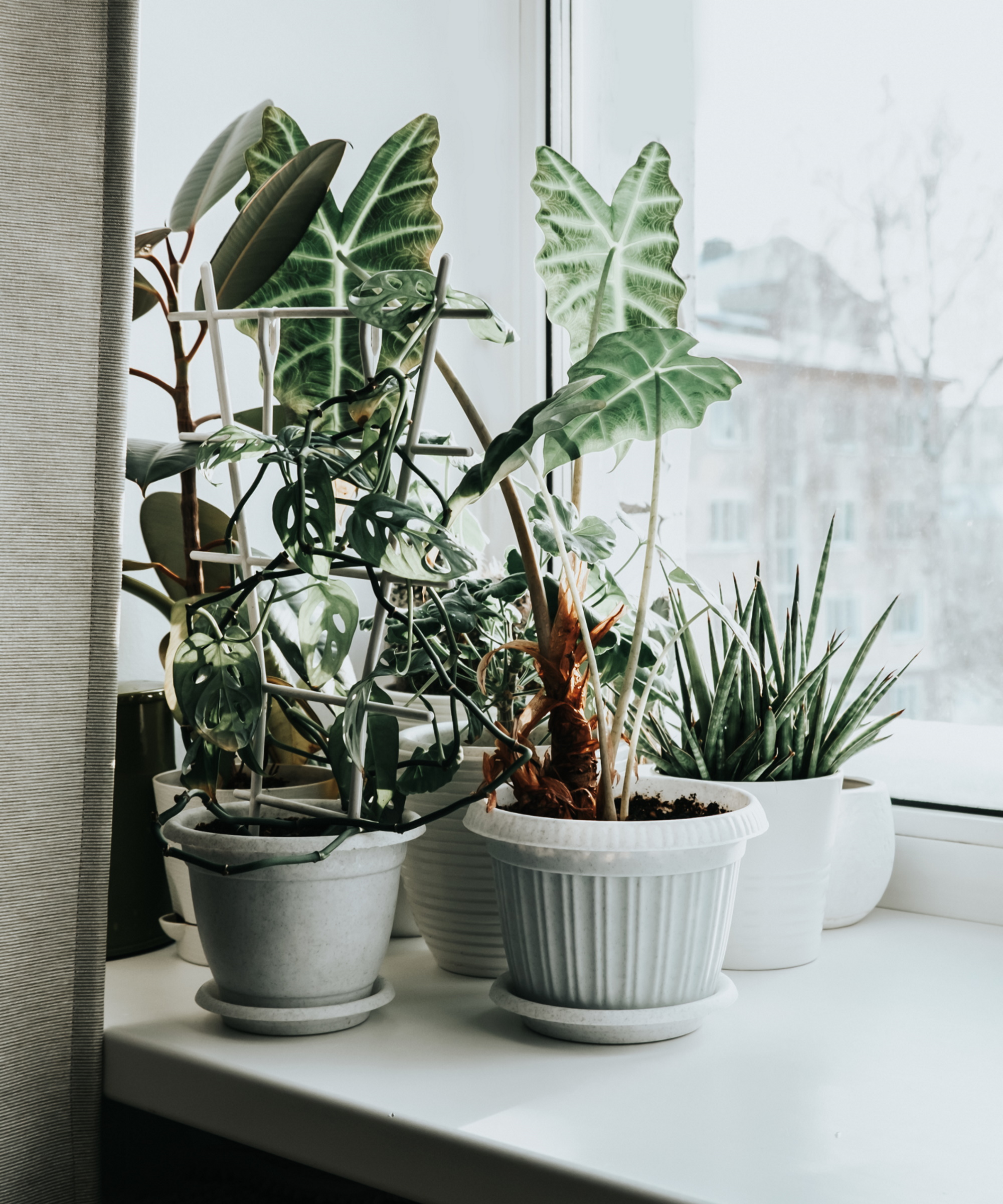How and when to use a houseplant trellis – to support climbing indoor plants
Use these beautiful structures to uplift your indoor garden


If your indoor jungle keeps getting bigger and is starting to grow out of hand, it might be time to look for new ways to display your houseplants. Trellises, for example, are a great tool for supporting and showcasing a range of indoor climbing plants.
Even if you already use plant stands and have created a plant shelf, it's worth considering adding a houseplant trellis to your display to train climbers and add a touch of class your plant décor. Just like an outdoor trellis, a houseplant trellis is a structure used to stake plants. The traditional style is a lattice, but houseplant trellises are now available in a wide range of shapes and materials to suit any interior aesthetic.
Of course, a trellis won't work for every type of indoor plant and should be used properly if you want to effectively train and support your plants. Not sure where to get started? Here, we've compiled everything you need to know about how and when to use a houseplant trellis.
When should you use a houseplant trellis?

'You should use a trellis if you’re growing climbing and vining plants that normally need support in their natural habitat,' explains Vladan Nikolic from Mr. Houseplant. 'A trellis stabilizes the plant and prevents mechanical damage or tangling,' he adds.
They're ideal for trailing and hanging indoor plants, like ivy, string of hearts or pothos, but can also be used to support larger plants that typically need staking, like monsteras, philodendrons and alocasias.
While it isn't essential to use a trellis for these plants, you may consider using one as your plant grows bigger and is struggling to support itself. Flopping stems and leggy growth can be a sign it's time to install a trellis.
'Vining plants can’t support their shape on their own and will either spill out of their pot or trail onto the floor. The trellis will provide the shoots with the vertical support they need to stay healthy and look more appealing, as well as encourage faster growth,' notes Julia Omelchenko, botany expert for the Plantum app.
Design expertise in your inbox – from inspiring decorating ideas and beautiful celebrity homes to practical gardening advice and shopping round-ups.
Of course, you may also choose to use a trellis when attempting to create an indoor vertical garden, as it's an easy way to get the look of a living wall with less effort.

Vladan Nikolic is a houseplant expert with over 10 years of experience. He is the founder of the houseplant care blog Mr. Houseplant and is a social media influencer for houseplants with over 500,000 followers.

Julia is a resident botany expert at Plantum, an app that helps identify plants and improve plant care.Julia Omelchenko is a professional botany expert for the Plantum app that helps users identify plant species, diagnose their conditions, and get specific care advice. She has four years of experience consulting on botany-related topics for Plantum (formerly NatureID). Her areas of specialization include phytopathology, plant physiology, and plant biochemistry.
How to use a houseplant trellis

When exploring climbing plant support ideas, you may initially assume it's hard to train plants to grow up a trellis or structure. However, these clever tools are quite straightforward to use.
'Start off by choosing a trellis that most suits the plant’s growing habit and its shape. Insert its base into the pot, making sure it’s stably grounded without damaging the roots,' advises Julia. 'Next, carefully secure the plant’s shoots to the supports using soft materials like plastic-coated wire or rubber ties,' she adds.
Using plant ties, like this from Walmart, you should keep securing new shoots to the trellis and adjust old ones as the stems grow. Work very carefully to ensure you don't squeeze and damage any shoots.
You can check your trellis is in properly by ensuring it is stable within the pot. Use an extra layer of potting mix to secure it in place if needed. Likewise, you may need to upgrade to a larger trellis when your plant gets bigger. In this case, carefully cut the ties to remove the trellis and then replace it with the new one.
Shop beautiful houseplant trellises online
FAQs
What does a moss pole do?
Moss poles are used to stake large and climbing plants to offer them support with their growth. They also offer the benefit of retaining water when the plant is watered so it never dries out. For this reason, moss poles are particularly beneficial ideal for plants with aerial roots seeking moisture, such as monsteras, philodendrons and pothos.
Using a houseplant trellis can be a good way to style your houseplants in a unique way. If you're new to using them, it's best to first try them with climbing plants that can be easily trained, like ivy. Once you've got the hang of them, try using larger trellises with more intricate shapes to create living art in your home.

Tenielle is a Gardens Content Editor at Homes & Gardens. She holds a qualification in MA Magazine Journalism and has over six years of journalistic experience. Before coming to Homes & Gardens, Tenielle was in the editorial department at the Royal Horticultural Society and worked on The Garden magazine. As our in-house houseplant expert, Tenielle writes on a range of solutions to houseplant problems, as well as other 'how to' guides, inspiring garden projects, and the latest gardening news. When she isn't writing, Tenielle can be found propagating her ever-growing collection of indoor plants, helping others overcome common houseplant pests and diseases, volunteering at a local gardening club, and attending gardening workshops, like a composting masterclass.





